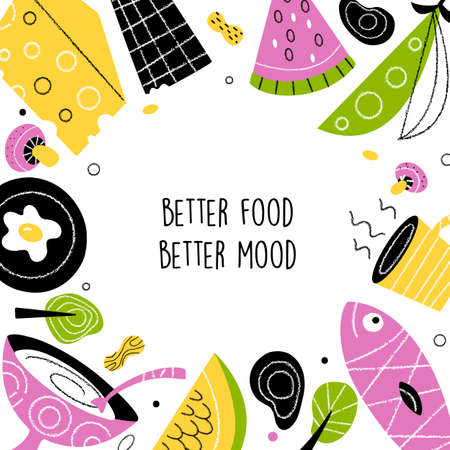Understanding the Difference: Processed Foods vs Wholefoods
When starting your journey towards a healthier, more balanced lifestyle, it’s essential to understand the key differences between processed foods and wholefoods. In the UK, our supermarkets and high streets are filled with a diverse range of options, making the distinction both important and sometimes confusing. Processed foods are those that have been altered from their natural state, often for convenience, shelf-life, or taste. Typical examples include ready meals like chicken tikka masala in a microwaveable tray, packaged sandwiches from high street chains, crisps, biscuits, and sugary breakfast cereals found in every Tesco or Sainsbury’s.
In contrast, wholefoods are ingredients that remain as close to their natural state as possible. Think fresh fruit and vegetables from your local greengrocer, unprocessed oats, British-grown pulses such as lentils and peas, free-range eggs, and fresh cuts of fish or meat from the butcher. Wholefoods generally don’t come with a lengthy list of ingredients or E-numbers – an apple is simply an apple. By recognising these distinctions in everyday shopping scenarios, you lay a strong foundation for transitioning your diet towards nourishing, minimally processed choices that support long-term well-being.
2. Benefits of Choosing Wholefoods for Mind and Body
Switching to wholefoods isn’t just about eating more fruit and veg—it’s a lifestyle shift that brings a host of physical and mental health benefits. The NHS Eatwell Guide encourages us to “base meals on starchy carbohydrates, choosing wholegrain varieties where possible,” and to enjoy at least five portions of a variety of fruit and vegetables every day. This advice is rooted in research showing that diets rich in minimally processed foods can help reduce the risk of heart disease, obesity, type 2 diabetes, and even some cancers—conditions often linked to high consumption of processed foods commonly found in the British diet, such as ready meals, crisps, and sugary snacks.
Physical Health Advantages
| Wholefood Benefit | Impact on Health |
|---|---|
| High fibre content (e.g. oats, brown bread) | Supports digestive health and helps lower cholesterol |
| Rich in vitamins & minerals (e.g. fresh berries, leafy greens) | Boosts immune system and energy levels |
| No added sugars or artificial additives | Helps manage weight and reduces risk of chronic diseases |
Mental Wellbeing Boost
Embracing wholefoods can also do wonders for your mood and mental clarity. Studies highlighted by the British Dietetic Association have found links between diets high in vegetables, nuts, oily fish, and wholegrains with lower rates of depression and anxiety. In contrast, typical British comfort foods—think sausage rolls or biscuits—tend to be high in saturated fats and sugars which can cause energy spikes followed by slumps.
A Typical British Diet: Then vs. Now
| Traditional Wholefood Plate | Modern Processed Plate | |
|---|---|---|
| Main | Grilled mackerel with new potatoes and steamed greens | Battered fish fingers with oven chips |
| Snack | An apple or handful of nuts | Crisps or chocolate bars |
Making the Switch for Balance
The move towards wholefoods is not about perfection but balance. By gradually swapping out highly processed options for simple wholefood swaps—such as porridge instead of sugary cereals or homemade vegetable soup instead of canned varieties—you’ll notice improvements not just in your body, but also in your overall sense of wellbeing. And with UK guidelines supporting this approach, making these changes aligns well with both tradition and modern health recommendations.

3. Navigating British Supermarkets for Wholefood Finds
If you’re aiming to embrace wholefoods, the aisles of British supermarkets can feel like a maze. With processed foods often taking centre stage, it’s important to shop mindfully and confidently. Start by heading straight to the fresh produce section—this is where you’ll find fruits and vegetables in their purest form. In most UK supermarkets, this area is usually at the entrance, encouraging you to fill your basket with colourful, nutrient-rich options first.
Spotting Wholefoods on the Shelves
Look for products with minimal ingredients—oats, lentils, beans, brown rice, and wholegrain breads are all excellent choices. In the bakery section, opt for loaves labelled “wholemeal” or “wholegrain,” steering clear of those with long ingredient lists or added sugars. When browsing dairy and alternatives, select plain yoghurt and unsweetened plant-based milks; check that they contain little more than milk (or nuts) and live cultures.
Understanding British Food Labels
British packaging features helpful cues: seek out the green traffic light symbols on nutrition labels, indicating lower levels of fat, sugar, and salt. Ingredients are listed in descending order by weight, so if sugar or oil appears near the top, it’s best to give it a miss. For tinned goods like beans or tomatoes, choose those labelled “in water” or “no added salt/sugar.” Remember that terms like “organic” or “natural” don’t always guarantee a food is unprocessed—always read the back of the pack for clarity.
Practical Tips for Every Aisle
Stick mostly to the outer edges of the supermarket—this is where wholefoods tend to be stocked. Avoid impulse buys at aisle ends and checkout displays as these are often filled with ultra-processed snacks. Bring your own shopping list focusing on essentials such as nuts, seeds, fresh fish from the counter, and seasonal veg. Over time, you’ll discover which stores offer the best selection of wholesome options and which brands align with your new lifestyle.
4. Simple Wholefood Swaps for Everyday British Meals
Making the shift from processed foods to wholefoods doesn’t mean giving up your favourite British classics. Instead, consider making small, manageable ingredient swaps that fit seamlessly into your daily routine. By starting with dishes you already know and love, you can gradually build your confidence and transform your diet in a way that feels natural and enjoyable.
Swapping Basics in British Staples
Think about the meals you prepare most often—perhaps a Sunday roast, a classic full English breakfast, or a comforting cottage pie. Many of these dishes rely on processed ingredients like white bread, instant gravy, or tinned vegetables. By swapping these out for wholefood alternatives, you’ll retain the heart of each meal while boosting its nutritional value.
Easy Ingredient Swaps
| Traditional Ingredient | Wholefood Alternative | Benefit |
|---|---|---|
| White sliced bread (for toast or sandwiches) | Wholegrain sourdough or seeded batch loaf | Higher in fibre, supports gut health |
| Tinned baked beans (in sugary sauce) | Homemade beans with tomatoes, herbs, and spices | No added sugar, more flavourful |
| Instant mash potato | Freshly mashed Maris Piper potatoes with skins | Retains more nutrients and texture |
| Sausages with additives | BUTCHERS or farm shop sausages with high meat content | Less fillers, better protein source |
| Pre-made fish fingers | Baked fresh cod fillets with wholemeal breadcrumbs | No artificial coatings, more omega-3s |
Building Confidence One Swap at a Time
You don’t need to overhaul your entire weekly menu overnight. Try introducing one swap per week—swap out regular rice for nutty brown rice in your curry night, or use rolled oats instead of instant porridge sachets at breakfast. With each successful change, you’ll find yourself reaching for wholefoods more naturally and enjoying meals that are both familiar and nourishing. Remember, every small step counts towards a healthier lifestyle rooted in British culinary traditions.
5. Building Lasting Habits: Mindful Shopping and Meal Planning
Transitioning to wholefoods isn’t just about what’s on your plate—it’s about nurturing mindful habits that make healthier choices second nature. Adopting a British approach means drawing inspiration from local traditions, seasonal produce, and the community spirit found at farmers’ markets and greengrocers.
Crafting Your Weekly Meal Plan
Begin by setting aside time each week to plan your meals. Think in terms of classic British staples—hearty porridge for breakfast, a homemade soup or sandwich for lunch, and a comforting roast or veggie stew for supper. Rotate recipes using seasonal vegetables like carrots, leeks, and brassicas, and incorporate grains such as barley or oats. A simple spreadsheet or a dedicated notebook can help you visualise your week ahead and reduce last-minute dashes to the shop.
Shopping with Intention
Take a list to the supermarket or, better yet, visit your local butcher, fishmonger, or market. Focus on whole ingredients: fresh fruit and veg, British cheeses, free-range eggs, pulses, and wholegrain bread. Read labels carefully—look for foods with minimal additives and avoid those with long lists of unfamiliar ingredients. Shopping mindfully helps you stick to your meal plan and resist the lure of processed convenience foods.
Tips for Stress-Free Grocery Trips
To keep shopping enjoyable rather than overwhelming, try these tips:
- Shop during quieter hours—early mornings or weekdays—to avoid crowds.
- Bring reusable bags and containers for loose produce or deli items.
- Embrace batch cooking: preparing double portions of soups or casseroles saves time later in the week.
- Get the family involved—let children pick out new fruits or help weigh veggies at the market.
Cultivating these mindful shopping and planning habits gently shifts your focus from convenience to nourishment. Over time, you’ll find that eating well becomes part of your everyday rhythm—much like a proper cuppa after a busy day.
6. Overcoming Common Challenges on Your Wholefood Journey
Embarking on a wholefood journey in the UK can be immensely rewarding, but it does come with its fair share of challenges. Understanding and addressing these hurdles—such as time constraints, budget concerns, and family preferences—can make the transition smoother and more enjoyable for everyone involved.
Time Constraints: Making Healthy Eating Work for Busy Lives
The British lifestyle often involves packed schedules, lengthy commutes, and after-school clubs or evening commitments. To save time while still eating well, try batch cooking at the weekend or prepping ingredients in advance. Quick wholefood recipes like hearty vegetable soups or simple oat-based breakfasts can become your weekday staples. Utilising local greengrocers or farm shops can also save you time and support your community.
Budget Concerns: Eating Well Without Breaking the Bank
Switching to wholefoods is sometimes seen as expensive, but with a little planning, it can fit most household budgets. Focus on seasonal British produce, which is often cheaper and fresher. Staples like oats, lentils, and root vegetables are affordable and filling. Shopping at local markets or using supermarket own-brands can help you keep costs down without compromising nutrition.
Family Preferences: Navigating Different Tastes and Habits
It’s common for families to have varied tastes or to be attached to traditional processed favourites. Instead of overhauling everything overnight, start by introducing one or two wholefood swaps each week—think homemade baked beans instead of tinned, or porridge instead of sugary cereals. Involve children in meal planning or cooking; letting them pick fruit at the market or stir the pot can make them more receptive to new dishes.
Finding Balance: Progress Over Perfection
Remember, transitioning to a wholefood lifestyle is not about rigid rules but about balance. Allow room for flexibility—enjoying a classic Sunday roast with all the trimmings or the occasional takeaway is part of living well in Britain. Celebrate small victories and focus on gradual changes that fit your family’s rhythm.
Your Wholefood Journey: Embracing British Life
Ultimately, overcoming these common challenges is about finding what works best for you within the context of your own life. With patience and creativity, you’ll discover that nourishing yourself and your loved ones with wholesome foods can be deeply satisfying—and perfectly suited to the pace of modern British living.


